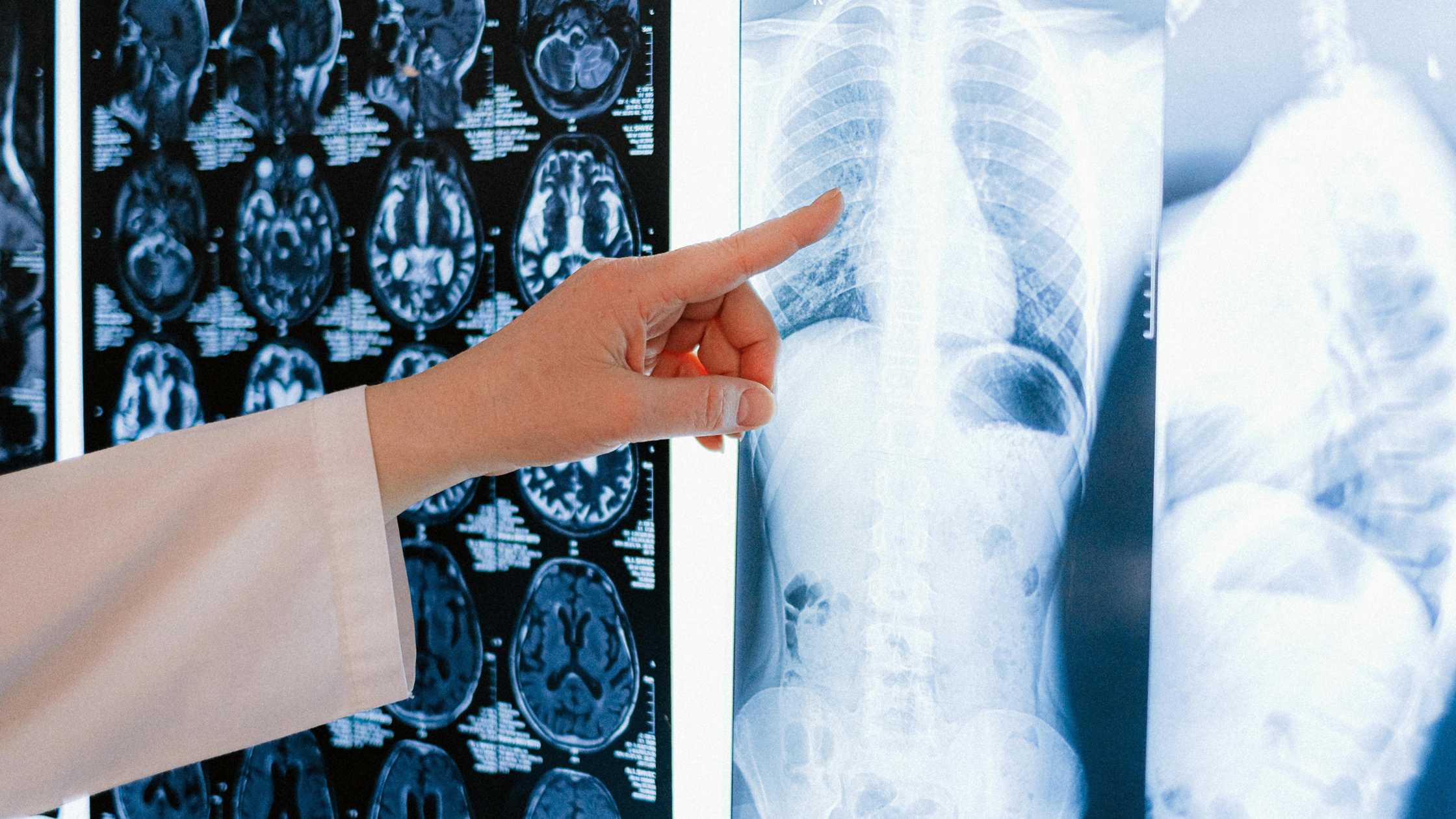Key Takeaways
- Meditation in community doesn’t just calm individuals—it measurably lowers cortisol, reduces inflammation, increases heart-rate variability, and fosters collective peace by strengthening social bonds.
- Scientific studies show that group meditation can create ripple effects: from improved mental resilience and cognitive clarity to reduced societal stress and potentially even lower crime rates .
- Intentional stillness—especially when shared—activates healing energy at both personal and communal levels, making meditation a powerful tool for individual well-being and collective transformation.
In our hyperactive world, our nervous systems are constantly under siege. I see this a lot in my private practice, where much of my focus is on longevity and brain health. As a Reiki Master deeply attuned to the energetics of the body, I’ve seen firsthand that when people commit to a regular meditation practice, profoundly wonderful changes occur.
Meditation doesn’t just quiet the mind. It rewires the brain, strengthens the immune system, and can even shift collective consciousness. The power of communal meditation—where individuals gather and focus their minds together—is emerging as one of the most amazing tools for both personal and societal transformation.
The Biology of Stillness
First, let’s take a look at meditation. It isn’t just a tool for quieting the brain. Meditation is a practice that reshapes the body’s stress response and enhances physical, emotional, and cognitive resilience. From lowering blood pressure to improving memory and deepening social bonds, the benefits of meditation are clearly backed by research. So, too, are the benefits of communal wellness practices like gratitude and volunteerism.
The Nervous System and Cognition
Here are some things we have known for a while about how meditation improves our health:
- Meditation increases gray matter density, particularly in the prefrontal cortex, which governs decision-making, focus, and emotional regulation (1).
- It activates the parasympathetic nervous system, helping shift from a chronic “fight or flight” response into a state of rest, repair, and integration.
- Regular mindfulness meditation improves working memory, mental flexibility, and attention span (2).
- Long-term meditators show reduced age-related brain atrophy, suggesting a neuroprotective effect that may help delay cognitive decline and Alzheimer’s risk (3).
- Meditation practices, especially those that evoke elevated emotional states (such as gratitude or love), have been associated with increased BDNF levels, supporting memory, focus, and long-term brain function (4). BDNF, or brain-derived neurotrophic factor, is a key molecule involved in neurogenesis, the growth and repair of neurons.
Cardiovascular and HRV
- Meditation helps lower systolic and diastolic blood pressure as it reduces sympathetic nervous system activity (5).
- It increases heart rate variability (HRV), a sign of greater emotional adaptability and cardiovascular resilience (6).
- Transcendental meditation reduces the risk of heart attack, stroke, and death from a cardiovascular event in those who have heart disease (7).
- Meditation has been shown to downregulate pro-inflammatory genes and reduce markers like CRP (C-reactive protein) and IL-6 (8). Since chronic inflammation is a root contributor to conditions like Alzheimer’s, Parkinson’s, and general cognitive impairment, this anti-inflammatory effect is essential for long-term brain health.
Finding your Calm
Learning how to meditate is not complicated. You just need to make a little time for it each day. Even 10–20 minutes of daily practice can create measurable benefits within weeks. Start with:
- Box breathing or slow diaphragmatic breathing to calm the nervous system
- Loving-kindness meditation (Metta) to activate oxytocin and heart coherence
- Visualization-based practices to build new neural pathways anchored in elevated emotions like gratitude, love, and joy
- Practicing in a group—whether in person or virtually—to enhance energetic coherence and increase collective healing outcomes

Quieting the Brain, Increasing Longevity
The link between stress and cognitive decline is well established. Chronic stress triggers persistent cortisol release, which wears down the hippocampus (the brain’s memory center) while also disrupting sleep, impairing executive function, and accelerating biological aging through telomere shortening and oxidative stress (9). Meditation, particularly when practiced in community, can interrupt this cycle and initiate profound shifts in the brain and body.
Here’s what the research shows:
- Increased neuroplasticity – Group meditation practices, especially those that include breathwork, visualization, or heart-brain coherence, stimulate the formation of new neural pathways. This rewiring enhances adaptability, emotional regulation, and learning capacity. Studies using fMRI scans show greater cortical thickness in regions linked to attention and memory after regular meditation (10).
- Oxytocin release – Often called the “bonding hormone,” oxytocin is naturally released during shared, emotionally resonant experiences like communal meditation. It reduces feelings of isolation and improves trust and empathy—important for social health, which in turn protects against cognitive decline and depression (11).
In essence, meditating together not only shifts your state—it shifts your biology. And when done consistently, it can be a powerful, preventative tool for enhancing brain health and longevity at every stage of life.
Community Engagement
When we meditate, especially in groups, practice gratitude, and engage with others in meaningful ways, we improve our overall health. We calm the nervous system, nourish the heart, and strengthen the brain’s capacity for focus, memory, and compassion. In the context of longevity, these practices are not optional—they’re foundational.
Wellbeing isn’t just about what we do for ourselves. It’s also about how we connect with others. Research shows that gratitude, acts of service, and social belonging deeply impact our biology and our brain function.
Gratitude
- Practicing gratitude activates the hypothalamus and ventral tegmental area, brain regions associated with dopamine and reward (12).
- Keeping a gratitude journal for just 21 days can improve mental health, lower cortisol levels, and increased well-being (13).
- Gratitude meditation has been shown to boost serotonin, reduce anxiety, and promote more positive emotional processing.
Volunteerism
- Studies show that volunteering regularly lowers mortality risk, improves cardiovascular health, and increases psychological well-being (14).
- Engaging in service activates the vagus nerve, releasing neurotransmitters that calm the body and create feelings of satisfaction and connection.
- Service-oriented individuals often experience greater purpose, which is linked to reduced risk of dementia and increased longevity (15).
Community
- Social connection reduces the risk of chronic disease and is one of the strongest predictors of longevity (16).
- Group meditation studies (including those conducted by the Maharishi Institute – see below) have shown that communal meditative intention can reduce societal stress markers like violent crime, emergency room visits, and even war intensity.

More than the Sum of Its Parts
The idea that we can influence not just our inner world, but the outer world through meditation, has been studied for decades. One of the most interesting examples occurred in Baltimore, Maryland, in the 1990s (17), where a large group of trained Transcendental Meditation practitioners gathered to meditate for peace and coherence in the city. During this time, violent crime dropped by more than 20%, far beyond what could be explained by seasonal or social trends.
This wasn’t an isolated experience. Similar studies, collectively known as the Maharishi Effect (18), were conducted in cities around the world, from Washington, D.C. to Jerusalem. Each time, researchers found that the rate of crime, conflict, and emergency calls came down significantly during the periods of group meditation.
What’s happening here? While we can’t fully “see” the mechanism, theories range from quantum field resonance to shifts in collective consciousness and biofield interactions. As someone trained in Reiki, I understand this through the lens of energy medicine: when we bring multiple coherent heart-mind fields into alignment, we create a harmonizing resonance that ripples outward.
The Neuroscience of Transformation
Dr. Joe Dispenza has been a leading voice in the intersection of neuroscience, epigenetics, and meditation. His advanced workshops, often involving thousands of participants from around the world, are designed to calm the mind and create lasting physiological change.
In his events, participants are connected to EEGs, brain-mapping technology, and HRV monitors. What the data shows is fascinating: individuals in deep meditation often experience gamma brainwave bursts, which are associated with heightened awareness, deep intuition, and even mystical states. These brain states are linked to internal peace and to the production of chemicals like serotonin, oxytocin, and DHEA, hormones that reduce inflammation, support cellular repair, and promote longevity.
Dr. Dispenza’s research indicates that when large groups meditate together with a unified intention, there is a collective energy that can be measured. In his workshops, participants’ heart rhythms begin to sync, and the electromagnetic field generated by the heart expands significantly—up to several feet beyond the body. These collective fields may help explain the amplified effects of group meditation on healing and transformation.

Collective Healing
Dr. Deepak Chopra has also explored the power of meditation for individual and global healing. Through initiatives like the “Never Alone” movement, Chopra’s team has led mass global meditations focused on suicide prevention, compassion, and planetary wellbeing. Many of these sessions are backed by biometric and psychological tracking, which consistently shows improvement in markers like HRV and reduced anxiety and depression among participants.
Where to Begin
If you’re interested in exploring a communal practice, consider these steps:
- Start with intention. Whether you’re alone or in a group, spend a moment setting a clear intention for your meditation—healing, peace, clarity, compassion.
- Find your circle. Look for local meditation groups, virtual meetups. Check out Dr. Dispenza’s coherence healing circles and/or Chopra’s global meditations.
- Track your transformation. Consider journaling or using biometric tools to monitor changes in mood, clarity, or HRV over time.
- Bring energy work into the mix. Consider practices like Reiki amplify the meditative state. Offering or receiving Reiki before or during group meditation can help deepen the experience.
We are entering a new era where ancient wisdom and modern science meet—and meditation is at the heart of that convergence. Meditation is not just a personal wellness practice. It’s a collective healing force.
Whether you’re meditating alone in the early hours or joining hundreds in a virtual field of coherence, know this: every moment of stillness you create ripples outward. Your brain, your body, and the world around you feel the shift.
And when we come together with clear intention and open hearts, that shift becomes a wave.
xo – Serena
Frequently Asked Questions:
1. How can I measure brain coherence or heart rate variability (HRV) at home?
You can use devices like the HeartMath Inner Balance, EmWave2, Oura Ring, or WHOOP to track coherence and HRV. These tools provide insights into your nervous system health and how well your body is responding to meditation or stress.
2. What’s the difference between meditation and guided visualization?
Meditation usually involves breath or mindfulness to calm the mind. Guided visualization focuses on mentally creating future outcomes or emotional states. Practices like Dr. Joe Dispenza’s blend both for transformational results.
3. Can virtual group meditation have the same benefits as in-person?
Yes. Studies show that meditating with a group—even online—can synchronize heart rhythms and enhance emotional coherence when done with shared intention.
4. How quickly can meditation improve brain and nervous system health?
Some people notice changes in mood and focus within a week. More lasting changes in the brain, like increased gray matter and improved HRV, can occur after 6–8 weeks of daily practice.
5. What makes a meditation “communal”?
A communal meditation involves multiple people meditating at the same time, often with a shared focus or intention. Whether in person or virtual, the collective energy amplifies individual experiences.
6. How does Reiki work during group meditation?
Reiki can be shared silently or remotely during a session. Practitioners use focused intention and traditional symbols to send energy, supporting harmony and deeper states of relaxation for the whole group.
7. Are there real examples of meditation shifting collective outcomes?
Yes. Studies like the Maharishi Effect showed group meditation reduced crime in cities like Washington D.C. and Baltimore. Other global efforts have focused on peace, healing, and crisis response.
8. What are “elevated emotions” and how do I access them during meditation?
Elevated emotions like gratitude, love, and joy help shift your energy field. To cultivate them, recall meaningful memories, focus on someone you love, or use breath and music to open the heart space.
9. How does lifestyle support meditation’s brain benefits?
A nutrient-dense, plant-forward diet supports neuroplasticity. Sleep, hydration, and movement enhance clarity and emotional regulation. Supplements like magnesium, B-vitamins, or adaptogens can help too.
10. What is the biofield, and is it scientifically recognized?
The biofield is the energetic field around the body, similar to an electromagnetic aura. While still emerging in mainstream science, it’s being studied through tools like biophoton imaging and heart coherence monitors.
Citations:
- Hölzel BK, Carmody J, Vangel M, Congleton C, Yerramsetti SM, Gard T, Lazar SW. Mindfulness practice leads to increases in regional brain gray matter density. Psychiatry Res. 2011 Jan 30;191(1):36-43. doi: 10.1016/j.pscychresns.2010.08.006. Epub 2010 Nov 10. PMID: 21071182; PMCID: PMC3004979.
- Norris CJ, Creem D, Hendler R, Kober H. Brief Mindfulness Meditation Improves Attention in Novices: Evidence From ERPs and Moderation by Neuroticism. Front Hum Neurosci. 2018 Aug 6;12:315. doi: 10.3389/fnhum.2018.00315. Erratum in: Front Hum Neurosci. 2018 Sep 05;12:342. doi: 10.3389/fnhum.2018.00342. PMID: 30127731; PMCID: PMC6088366.
- Chételat G, Mézenge F, Tomadesso C, Landeau B, Arenaza-Urquijo E, Rauchs G, André C, de Flores R, Egret S, Gonneaud J, Poisnel G, Chocat A, Quillard A, Desgranges B, Bloch JG, Ricard M, Lutz A. Reduced age-associated brain changes in expert meditators: a multimodal neuroimaging pilot study. Sci Rep. 2017 Aug 31;7(1):10160. doi: 10.1038/s41598-017-07764-x. PMID: 28860449; PMCID: PMC5578985.
- Cahn BR, Goodman MS, Peterson CT, Maturi R, Mills PJ. Yoga, Meditation and Mind-Body Health: Increased BDNF, Cortisol Awakening Response, and Altered Inflammatory Marker Expression after a 3-Month Yoga and Meditation Retreat. Front Hum Neurosci. 2017 Jun 26;11:315. doi: 10.3389/fnhum.2017.00315. Erratum in: Front Hum Neurosci. 2022 Apr 08;16:868021. doi: 10.3389/fnhum.2022.868021. Erratum in: Front Hum Neurosci. 2023 Aug 30;17:1278043. doi: 10.3389/fnhum.2023.1278043. PMID: 28694775; PMCID: PMC5483482.
- Goldstein CM, Josephson R, Xie S, Hughes JW. Current perspectives on the use of meditation to reduce blood pressure. Int J Hypertens. 2012;2012:578397. doi: 10.1155/2012/578397. Epub 2012 Mar 5. PMID: 22518287; PMCID: PMC3303565.
- Kirk U, Axelsen JL. Heart rate variability is enhanced during mindfulness practice: A randomized controlled trial involving a 10-day online-based mindfulness intervention. PLoS One. 2020 Dec 17;15(12):e0243488. doi: 10.1371/journal.pone.0243488. PMID: 33332403; PMCID: PMC7746169.
- Schneider RH, Carr T. Transcendental Meditation in the prevention and treatment of cardiovascular disease and pathophysiological mechanisms: An evidence-based review. Adv Integr Med. 2014 Dec;1(3):107-112. doi: 10.1016/j.aimed.2014.08.003. Epub 2015 Apr 2. PMID: 35813238; PMCID: PMC9262039.
- Black DS, Slavich GM. Mindfulness meditation and the immune system: a systematic review of randomized controlled trials. Ann N Y Acad Sci. 2016 Jun;1373(1):13-24. doi: 10.1111/nyas.12998. Epub 2016 Jan 21. PMID: 26799456; PMCID: PMC4940234.
- Knezevic E, Nenic K, Milanovic V, Knezevic NN. The Role of Cortisol in Chronic Stress, Neurodegenerative Diseases, and Psychological Disorders. Cells. 2023 Nov 29;12(23):2726. doi: 10.3390/cells12232726. PMID: 38067154; PMCID: PMC10706127.
- https://www.apa.org/topics/mindfulness/meditation
- Ito E, Shima R, Yoshioka T. A novel role of oxytocin: Oxytocin-induced well-being in humans. Biophys Physicobiol. 2019 Aug 24;16:132-139. doi: 10.2142/biophysico.16.0_132. PMID: 31608203; PMCID: PMC6784812.
- Lewis RG, Florio E, Punzo D, Borrelli E. The Brain’s Reward System in Health and Disease. Adv Exp Med Biol. 2021;1344:57-69. doi: 10.1007/978-3-030-81147-1_4. PMID: 34773226; PMCID: PMC8992377.
- Wang X, Song C. The impact of gratitude interventions on patients with cardiovascular disease: a systematic review. Front Psychol. 2023 Sep 21;14:1243598. doi: 10.3389/fpsyg.2023.1243598. PMID: 37809310; PMCID: PMC10551131.
- Kim S, Halvorsen C, Han SH. Volunteering and Changes in Cardiovascular Biomarkers: Longitudinal Evidence From the Health and Retirement Study. Innov Aging. 2023 Jun 4;7(5):igad048. doi: 10.1093/geroni/igad048. PMID: 37457805; PMCID: PMC10340447.
- Sutin AR, Luchetti M, Terracciano A. Sense of purpose in life and healthier cognitive aging. Trends Cogn Sci. 2021 Nov;25(11):917-919. doi: 10.1016/j.tics.2021.08.009. Epub 2021 Sep 16. PMID: 34538721; PMCID: PMC8987293.
- https://www.cdc.gov/social-connectedness/about/index.html
- https://worldpeacegroup.org/washington-project-full-article/
- https://maharishi-india.org/maharishi-effect
by





